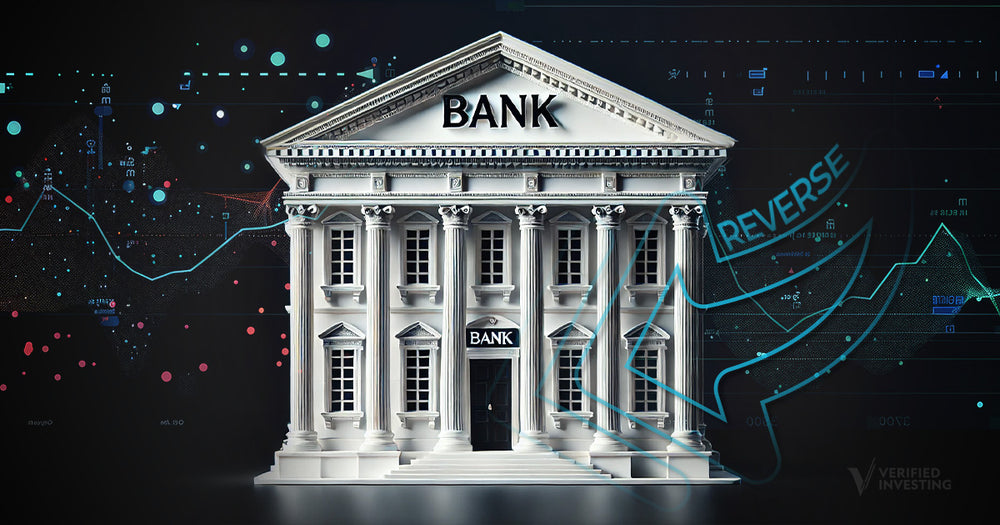What is Fractional Reserve Banking?

Fractional reserve banking is a system in which banks keep a fraction of customer deposits in reserves available for withdrawals while creating loans from the rest. These loans put otherwise dormant capital to work, expanding the economy. This system allows banks to profit from loan interest while eliminating fees or paying interest to depositors.
The premise behind fractional reserve banking is that only a portion of depositors will demand their money back at any one time, and the bank will have enough cash in reserves to handle any redemptions.
How Fractional Reserve Banking Works
In simple terms, fractional reserve banking works like this:
A bank with a 10% reserve requirement sets aside 10% of every deposit as reserves and uses the rest of the money to make loans. For example: if the bank receives a $1,000 deposit, it adds $100 to reserves and uses the other $900 to make loans. The original depositor still has $1,000 in their account, but an additional $900 enters circulation in the form of the loan. With 10% of all deposits held as reserves, the bank should have enough cash to honor redemptions.
The situation changes if an economic shock or doubts about the bank's health occur. This may trigger a run on the bank, with everyone trying to pull their money out at the same time. This can cause a liquidity crisis for the bank, as it runs out of cash and liquid assets. It may still be solvent, with significant assets on its books, but if they can’t be sold quickly, the bank could still be unable to honor withdrawal obligations and fail.
Central banks can offer financial backstops for troubled banks in the form of emergency loans to prevent them from failing and the contagion from spreading to other banks.
The History of Fractional Reserve Banking
- While approximations can arguably be traced back to antiquity, fractional reserve banking as we know it originated in the Italian merchant republics in the 14th century. The Medici Bank, founded in Florence in 1397, is a notable example.
- In the 15th century, goldsmiths who offered secure gold storage realized that the deposit receipts they issued were circulating as money. As a result, few people withdrew their gold, allowing the goldsmiths to lend it out. By the 17th century, many large goldsmiths had transformed into regular fractional reserve banks.
- The Bank of England, founded in 1694, played a large part in developing and promoting fractional banking standards in Britain. One of its mandates was regulating fractional reserve banks to maintain economic stability. The success of the Bank of England resulted in it becoming a model for future central banks
- Most European countries had established central banks by the end of the 19th century, in part to regulate the banking system. The US did not have a modern central bank until 1913 when the Federal Reserve was established.
- The combination of a booming US economy and the proliferation of lightly regulated wildcat banks in the early 19th century contributed to frequent bank failures. Bank runs, especially those affecting larger institutions, often spread to other banks, sparking economic panics.
- Congress passed the National Banking Act in 1863 as the first attempt to regulate fractional reserve banking at the federal level. It established federally chartered banks and required them to keep a 25% reserve ratio.
- Several panics in the latter half of the 19th century illustrated the need for stronger measures. Congress passed the Federal Reserve Act in 1913, creating an independent central bank to control inflation and regulate banks.
- By the mid-20th century, fractional reserve banking had spread worldwide. Central banks used reserve requirement ratios as a tool of monetary policy. By increasing and decreasing the percentage of deposits that banks had to keep on hand, they could reduce or expand liquidity.
- The Fed reduced the reserve requirement ratio to zero in 2020 in response to the COVID crisis. This increased liquidity, allowing banks to use funds previously held as reserves for loans to households and businesses.
- After eliminating mandatory reserve requirements, the Fed still has multiple tools to control bank liquidity. It adjusts the rate paid to banks on excess reserves (Interest on Reserve Balances) and overnight reverse repo agreements to influence banks' decisions to save or lend funds. The Fed also sets the Fed funds rate at levels it believes will encourage or dissuade bank lending
Fractional Reserve Banking Today
Fractional reserve banking allows the creation of loans that accelerate economic growth while maintaining a balance between liquidity and profitability. Regulatory measures like reserve requirements and deposit insurance minimize the risk the system used to have.
Even in the age of advanced banking practices and regulatory frameworks, it is still possible for bank runs to occur. Normally restricted to emerging markets facing political and economic shocks, banking failures can still occur in developed countries. Lately, it was the failure of several large banks that were overexposed to commercial real estate or crypto markets.
This points out the importance of thinking carefully about where to do your banking. Fortunately, most people's accounts are covered up to $250,000 by FDIC insurance.
Trading involves substantial risk. All content is for educational purposes only and should not be considered financial advice or recommendations to buy or sell any asset. Read full terms of service.




